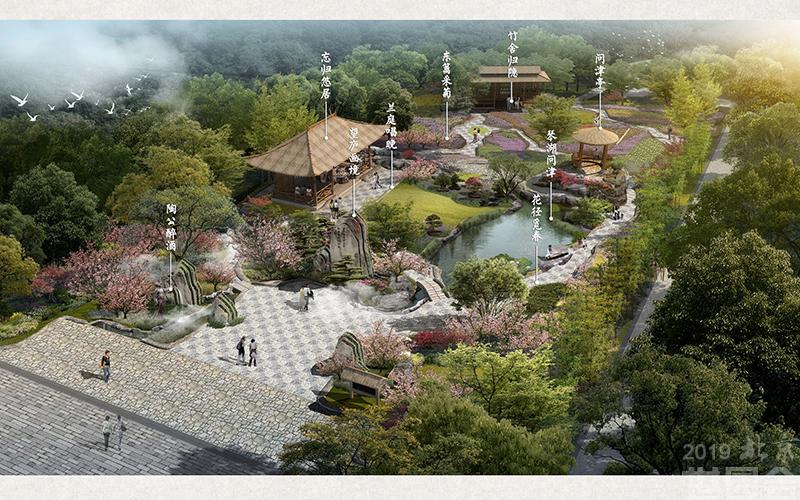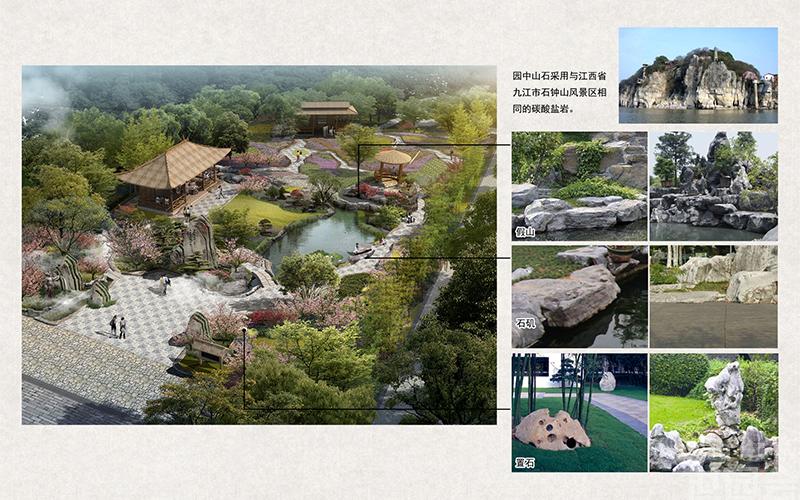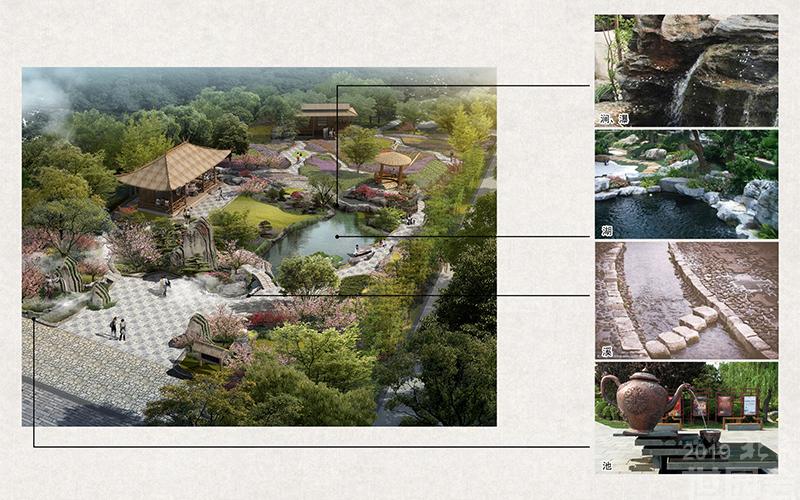Gifted with nature's treasures and beautiful sceneries, Jiangxi has a profound legacy of landscape and culture. The theme of the Jiangxi Garden in Beijing Expo 2019 is “A fairyland in Lushan Mountain, a paradise beyond the world.” The garden will take Lushan Mountain as the background and the peach blossom wonderland depicted by Tao Yuanming as the blueprint to create romantic, uninhibited scenes of ancient pastoral lives. Besides, it will embody the cultural origin of the Jiangxi Garden through integrating Jiangxi elements like the picturesque Lushan Mountain, the porcelain painting of Jingdezhen and flowery gardens. It will bring ancient elements to our day from three aspects—garden, field, and home— thus echoing the theme of Beijing Expo—“Live Green, Live Better.”

The Jiangxi Garden is located inside the East China Cluster of the Chinese Gardening Exhibition Area, bordering the wetlands and valleys on the east, with the entrance and exit in the southwest. The overall terrain is high in the south and low in the north with a two-meter gentle slope and a total area of 2,004 square meters. The whole garden is unfolded as Tao Yuanming’s “Journey to the Peach Blossom Wonderland.” The designers have created a quadruple atmosphere that are dreamy, elegant, wild and joyful by using terrains like the mountain-shape porcelain paintings, rockeries, peripheral forests, flower fields and lawns, which help make various waterscapes like pools, streams, lakes, gullies, waterfalls, and ponds.

In Scene 1—the Dreamy Scene—the sculpture of “Tao Yuanming Getting Drunk” brings out the theme as the major figure. Designers use Chinese liquor as the source of waterscapes of the whole garden in an ingenious way. At the same time, the mountain-shape porcelain painting is the carrier of the picturesque scene of Tang Yin’s Painting of Lushan Mountain. Peach blossoms are planted around the painting, along with Jiangxi azalea bonsai, presenting the dreamy and picturesque scene of an isolated paradise. Through the streams, mountains and peach groves, the whole world cracks open before you with the leisure space constituted by Qinhu Lake, gullies, rockeries, bamboos, and pavilions. This is Scene 2: the Elegant Scene, with peach groves, rocks and the land of flowers that bring you to the Qinhu Lake and on a flowery path to spring. Passing through the rockeries, you will see a chrysanthemum garden constituted by various chrysanthemums, bamboo fences and a bamboo cottage. It is the recreation of the Wild Scene where you see the southern mountain while picking chrysanthemums beneath the eastern fence. The bamboo cottage is furnished with porcelain paintings and objects that show you Tao Yuanming’s pastoral poems and his life in seclusion, which is the story of his “Seclusion in the Bamboo Cottage.” Take a turn at the chrysanthemum garden and go to the lakeside with books and stringed instruments, you will see a spacious cottage in front of the quiet orchid courtyard, serving as the place for the hermits to indulge themselves in poetry and wine. This setting creates the Joyful Scene in the orchid courtyard at dusk, one that visitors would enjoy too much to go home.

Besides the overall design, ingenuity can be seen everywhere in the garden. Couplets in the garden are all engraved in the form of porcelain embedded in bamboo and wood, with the contents reflecting the artistic atmosphere of Tao Yuanming’s poems. It adds a finishing touch that triggers viewers’ imagination and embodies Jiangxi characteristics. Small facilities in the garden take nature and simplicity as the main key, and landscape buildings are mostly built with energy-saving materials like bamboo and wood. With the essence of Jiangnan (south of the Yangzi River) architecture, they present an overall impression that is fresh and natural. The pavement design applies materials like porcelain chips, tiles, blue bricks and natural block stones. The patterned footpath, integrated with visual tinges of a literati, is retro natural, environment-friendly and ecological.
